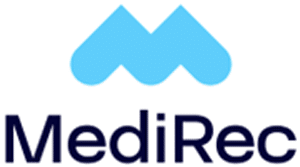Australia’s healthcare sector stands at a crossroads in 2025, driven by rapid technological change, shifting workforce expectations, and critical demographic trends. Providers, recruiters, and job seekers each face unique challenges – and opportunities -as they navigate a landscape defined by skill shortages, digital disruption, and rising demand for quality care. This comprehensive guide examines the recruitment trends, strategies, and solutions shaping healthcare in 2025, and highlights how MediRec’s leadership is helping solve the industry’s most pressing workforce challenges.
Understanding the Healthcare Job Market in 2025
The Australian healthcare system is the nation’s fastest-growing sector, with over 5% employment growth in the last year alone and the continued addition of new jobs across metropolitan and regional areas. While overall online job ads for medical roles softened in early 2025 due to economic headwinds, demand remains strong for core clinical and allied health positions -especially in aged care, nursing, mental health, and disability support.
Why Is Demand So High?
Demographics: Australia’s ageing population is a major driver, with 21–23% of citizens expected to be aged 65 and over by 2066.
Chronic Disease: Rates of diabetes, cardiovascular illness, dementia, and mental illness are rising, increasing the need for specialist and support staff.
Government Policy: Investment and reforms in aged care, mental health, and disability services have opened up hundreds of new roles, while telehealth has expanded access in rural and regional communities.

Top Healthcare Jobs and Skills in Demand
Recent reports show market resilience for several key occupations :
Community Mental Health Workers: Over 5,200 ads in mid-2025, driven by funding, awareness, and regional shortages.
Allied Health Assistants: Help physiotherapists and occupational therapists meet demand; more than 2,300 jobs advertised.
Aged Care Workers: Projected 16% sector growth as Australia’s population ages, with personal care assistants and enrolled nurses most needed.
Registered Nurses and GPs: Shortages persist nationwide, particularly in rural settings, resulting in fierce competition for talent.
NDIS Support Coordinators, Music Therapists, and remote therapy roles: New opportunities have emerged in response to sector reforms and digital health expansion.
These trends underpin the recruitment challenges faced by health organisations, driving up demand for specialised recruiters and strategic talent acquisition services.

The Impact of Technology on Recruitment
Healthcare recruitment now lives at the intersection of human care and digital transformation :
AI-Powered Matching: Advanced platforms screen applications, verify credentials, and flag top candidates instantly, streamlining compliance.
Digital Onboarding: Mobile-friendly interfaces keep candidates engaged and automate key steps for faster hiring and induction.
Telehealth and Virtual Roles: The shift to remote consultations has opened new career pathways, broadening recruitment beyond traditional clinical settings.
Providers using these tools benefit from lower manual workloads, greater recruitment speed, and the ability to scale up or down as needs fluctuate.
Challenges in Healthcare Staffing
Despite growth, health organisations face significant hurdles:
Workforce Shortages and High Turnover: Burnout, long hours, and rising workloads lead to frequent role changes and lost productivity.
Credentialing and Compliance: Strict regulatory oversight means ongoing background checks, licensing, and verification, all requiring skilled HR teams.
Regional Gaps: Rural providers struggle to attract and retain staff, especially for emergency, mental health, and aged care roles. Relocation support and pastoral care are critical to success.
Strategies to counteract these include flexible working, mentorship, competitive salary packages, and active support for employee wellbeing and career growth.

MediRec: Leading the Way in Healthcare Recruitment
MediRec stands apart through its commitment to both recruitment innovation and personal service:
Customisable Placement Options: Permanent, temporary, contract, and remote roles, tailored to each provider’s unique needs.
Advanced Technology Integration: AI-enabled credentialing, compliance, and candidate matching for speed and accuracy.
Employer Branding & Wellbeing: Support for retention, training, and staff happiness to boost workforce stability.
Regional Recruitment Support: Expertise in sourcing, relocating, and acclimatising staff in remote settings – ensuring ongoing engagement and continuity of care.
With a network of pre-vetted professionals and a commitment to robust compliance, MediRec helps healthcare organisations hire smarter, faster, and more strategically.
Future-Proofing Your Organisation’s Recruitment Strategy
Healthcare recruitment in 2025 requires agility, insight, and an unwavering focus on both compliance and candidate experience. Providers partnering with expert agencies like MediRec benefit from deeper talent pools, lower hiring risks, and sustainable workforce planning.
For decision-makers, it pays to stay current with market trends, invest in workforce flexibility, and adopt technology that aligns with new patient care models. For candidates, upskilling in digital healthcare, allied health support, and remote therapy can open doors in this evolving sector.
To meet the challenges and seize the opportunities of Australia’s healthcare workforce transformation, connect with MediRec -your partner in building a resilient future for care.

Stay Ahead in Healthcare Recruitment - Sign Up for Insights
Want the latest updates on healthcare workforce trends, new job opportunities, and expert tips for navigating Australia’s dynamic medical sector? Subscribe to the MediRec newsletter today!
Get exclusive industry news delivered straight to your inbox
Discover first access to new roles for nurses, doctors, and allied health professionals
Receive expert advice and practical resources to build your healthcare career or organisation
Join a community focused on quality care, best practices, and professional growth

